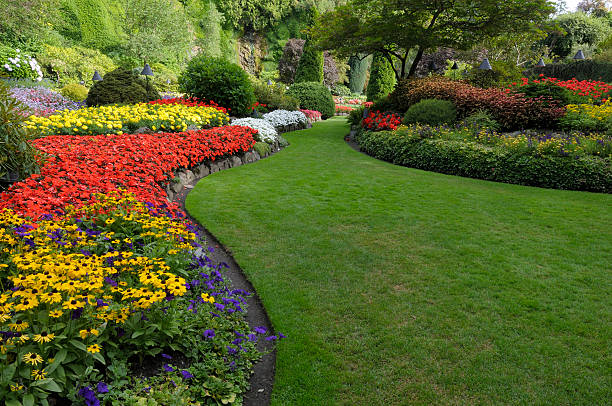How Good Can My Home Look By Improving My Landscape?
Landscaping is a great way to improve the look of any area. Believe it or not, landscaping can be a relatively simple process. Not every landscaping job requires the need to hire professionals that will cost an arm and a leg. Here are a few easy tips to help you get started.
Prior to starting a landscaping project, get the soil tested. Having the soil tested can help you to determine what needs to be added or eliminated, so that you can take care of these things before you begin to plant. Your plants will be healthier and your garden more successful if you take this step.
Use contrast to bring interest to your landscaping. Try to plant items that are very different from each other in color, form and texture. Look at a color wheel, select the colors that are opposite each other and then pair plantings of those colors together. This variety will give a better look to your landscape.
Before purchasing or planting a given plant, ensure that you know its expected height and its growth rate. You may decide not to bother with that cute little shrub if you find out how quickly it can become an overgrown monster. Fast-growing plants may require more pruning and maintenance than you bargained for, so do your homework before you shop.
Try talking to a pro before you start working on your landscape. You might not need a landscape designer or architect to draft your whole project, but for under $100, a consultation that lasts about an hour can be well worth the money if it prevents you from making costly mistakes later on.
Always use odd numbers of plant groupings. It is more pleasing to the eye and more natural looking to see groups of 3, 5 or 7 plants than groups of 2, 4 or 6. Aim for plantings that are more triangle-shaped than square-shaped, and your landscaping will have more eye appeal.
If you have a very small house, watch your use of big trees. Big trees can be overwhelming when they are placed in the yard of a very small house. They can distract from the house, and might even make it look smaller than it actually is. Choose smaller varieties instead.
Minimize your workload by eliminating excess flower beds, and borders. These additions to your landscape can be a haven for weeds, and hard to cut grass. By replacing them in your landscape plan, you will decrease the attention needed for weeding and unpleasant maintenance. Look for less cumbersome additions to your lawn.
If you want to change your landscaping, consider using plants that are native to your area. These types of plants are pests immune and drought resistant. This means you will be using less water for upkeep of your landscaping and less pesticide. It will also help you with lowered fertilizer costs because these plants are adapted to the soil in your area.
Before you begin any landscaping project, it is important to check for any county codes or rules you may need to follow. For example, there are certain plants and heavy objects that will not be allowed on top of a septic drain field. A simple check with the county can locate the drain field and help you avoid disaster!
Check outside of the Internet and large home improvement stores for your plants and materials. You may find botanical centers holding sales on plants. You may even want to ask around the neighborhood or check the classified ads to see if anyone has extra perennials that they are looking to get rid of.
If you are trying to hide an unsightly fence in your yard, consider adding some climbing plants. Climbing plants will naturally cover the fence, making it more attractive to the eye. This is much less expensive than replacing the fence, and it gives you an extra sense of privacy too.
Spending the money to consult with a professional before you start your landscaping project can pay off in the long run. While it may cost some money, talking to a landscape designer will help you in getting the results you desire. A single consultation is usually enough to set you off on the right foot as you start down your landscaped path.
Separate your yard development project into different phases. By splitting a lawn into compartmentalized areas and working around it, you will find more affordable plants and easier layouts to implement at a lower price. You can choose to do one area at a time, or add one type of plant at a time throughout your yard.
So now you know that landscaping can be a snap. As stated before, you don't have to call in the professionals to do all of your landscaping. You can do many of your own landscaping projects by yourself or with the help of your family. Use the tips from this article to give you some great ideas.

